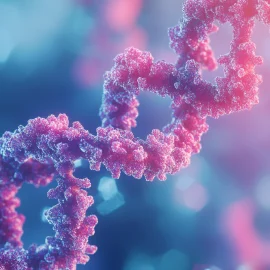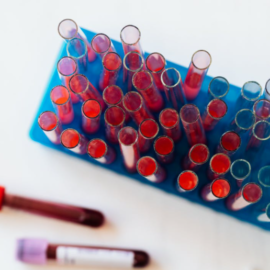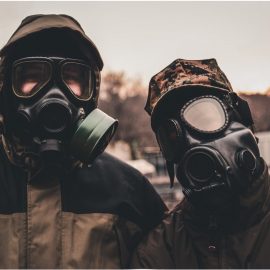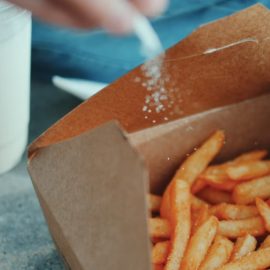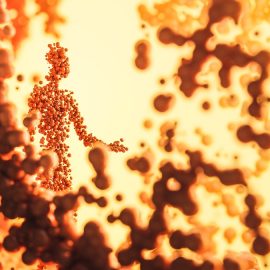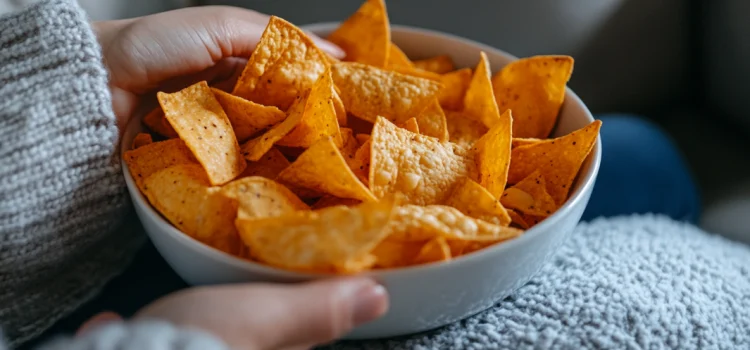
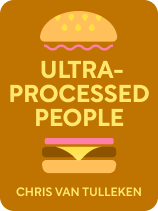
This article is an excerpt from the Shortform book guide to "Ultra-Processed People" by Chris van Tulleken. Shortform has the world's best summaries and analyses of books you should be reading.
Like this article? Sign up for a free trial here.
What is an ultra-processed food? How does it differ from processed foods?
The difference between processed food and ultra-processed food is that ultra-processed food isn’t actually food anymore. Dr. Chris van Tulleken explains the different classifications of foods, how ultra-processed foods are created, and how to identify if a food is ultra-processed.
Continue reading for an explanation of ultra-processed food from a doctor.
What Is Ultra-Processed Food?
Most food is processed to some extent. Even baking bread or making a smoothie in the blender are forms of processing. But ultra-processed food is different, says van Tulleken. Ultra-processing doesn’t just modify food; it transforms food into something else entirely.
So, what is an ultra-processed food? Van Tulleken argues that UPF isn’t really food: It’s an industrially produced substance that looks, smells, and tastes like food. It starts out as food—usually high-yield crops like corn or soybeans that are grown for animal feed and, as a result, are subsidized in many countries. These inexpensive crops are reduced to their basic molecular constituents, then chemically and physically altered to form synthetic molecules that can mimic all kinds of natural ingredients. These synthetic molecules are then reassembled into something that looks like food and are filled with additives that add flavor, color, saltiness, and sweetness. Without the additives, UPF probably wouldn’t taste like food at all.
| How Corn Becomes UPF In The Omnivore’s Dilemma, science journalist and author Michael Pollan uses the example of corn to explain how a few cheap crops form the basis for so much UPF. He explains that out of approximately 45,000 items in an average American supermarket, a quarter contain corn. It’s in beer, cake mix, frozen meals, and most meat, to name just a few. Corn is so ubiquitous because since the 1970s, US government policies influenced by business interests have driven down the price of corn while simultaneously pushing farmers to consolidate into larger farms. Because most farms grow a single crop, the only way for them to make enough money to survive is to grow more corn. This effectively subsidizes buyers of cheap corn, like Coca-Cola and Cargill, who can make an even greater profit transforming it into UPF. UPF corn chips are a simple example of how corn becomes UPF. First, corn is cooked, soaked, and pulverized into a dough. Then, it’s fed into extrusion machines, which are used throughout the food industry to mass produce all types of UPF. The extrusion machine applies intense heat and pressure to the dough, destroying the cell walls inside the corn. Rotating screws blend and force the dough through a small hole in the machine. Next, the dough is molded into sheets, flattened, and cut into chip shapes. The chips are baked and deep fried. Finally, the chips are coated with artificial flavors and colors, as well as salt, sugar, and MSG. A similar method can be used to convert a variety of cheap crops into a flavorless “extrudate” that can then be molded into any shape and flavored with any additives to create thousands of UPF products. |
Making “food” from industrially created ingredients is not only cheaper than making it from natural ingredients, but it also lengthens the food’s shelf life and makes centralized distribution easier, which further contributes to UPF’s low price. The lower cost of UPF makes it more desirable to consumers; the lower cost of UPF’s synthetic ingredients maximizes profits for food corporations.
(Shortform note: Pollan further explains how UPF companies maximize profit. He says that processing not only gets people to buy more food, it also allows companies to capture more of the money a consumer spends on food. For example, if you spend a dollar on eggs, 40 cents goes back to the farmer, but if you spend a dollar on corn sweetener, only 4 cents goes to the farmer, and UPF companies get the rest.)
Van Tulleken cites Brazilian scientist Carlos Monteiro, who first described the concept of “ultra-processed food” in 2009. Monteiro devised the NOVA system, a now widely used food classification system that divides food into four groups based on the level of processing:
1. Unprocessed or minimally processed food. These are foods in their natural state. Examples include fruits, vegetables, and meat.
2. Processed culinary ingredients. These are ingredients that we use in traditional cooking by combining them with foods in the first category. Examples include butter, sugar, salt, oil, and vinegar.
3. Processed foods. These are foods that are processed mainly for preservation and sold already prepared to eat. Examples include canned food, smoked fish, and fresh bread.
4. Ultra-processed foods. These are foods made primarily from industrially created ingredients, using complex industrial processes such as extracting substances from whole foods and chemically modifying those substances. These foods are intended to be highly profitable, convenient, and desirable. Examples include fast food, frozen meals, most packaged snacks, most store-bought bread, and soda.
(Shortform note: Critics of the NOVA system argue that it’s too vague to be useful to either consumers or researchers. They contend that even experts have difficulty determining which foods should belong to which group; this leads to inconsistent classifications. However, research also shows that the NOVA system is intuitive to consumers: People’s perceptions of foods and their processing levels generally line up with the foods’ NOVA classifications.)
If you’re wondering if there’s an easy way to identify UPF, van Tulleken says it’s usually anything that’s wrapped in plastic and contains at least one ingredient that you wouldn’t find in your kitchen. He also suggests that low-fat, no-fat, and other “diet” foods are almost always UPF.
(Shortform note: Van Tulleken’s ideas on packaged low-fat foods echo Pollan’s contention in his 2007 article, “Unhappy Meals” (which influenced Monteiro’s thinking in formulating the NOVA system) that any food that comes in a package advertising health benefits isn’t really food—and isn’t really healthy at all. Most experts, including van Tulleken and Pollan, agree that low-fat foods don’t help you lose weight, and generally result in weight gain and other health problems. Pollan explains why in his book In Defense of Food: In low-fat foods, UPF companies replace saturated fats with hydrogenated seed oils. The process of solidifying vegetable oil using hydrogen creates trans fats, which are now known to cause heart disease and high cholesterol.)

———End of Preview———
Like what you just read? Read the rest of the world's best book summary and analysis of Chris van Tulleken's "Ultra-Processed People" at Shortform.
Here's what you'll find in our full Ultra-Processed People summary:
- Why it’s so hard to stop eating your favorite chips
- How the way ultra-processed food is made harms the environment
- Ways to counteract the effects of ultra-processed food

